About the Client
Frilans Finans (FF) is Sweden’s largest umbrella company. The company's mission is to enable people to do business in an easy and safe way. Since 1999, Frilans Finans has helped more than 30,000 freelancers to invoice without starting their own business. The company initially started by targeting the creative industry, but today their customers come from all kinds of industries, both in Sweden and abroad. Their mission is to enable people to follow their passions and dreams.
Role
In the team I worked on qualitative and quantitative research, generating ideas based on the research insights, future forecasting, prototyping and testing different solutions before implementation.
Process
Our process included defining the user journeys, testing the interface, analyzing the data, researching industry trends and future forecasting, mapping the emotional experience, prototyping, and finally verification testing. During the project, we worked closely with FF, by arranging workshops, interviews, and regular update meetings. The result; a solid strategy built for the future, containing all the services needed to fully support and serve the needs of the ever-growing freelance community in their everyday work life, both on and off screen.
FIRST MEETING AND WORKSHOP WITH THE CLIENT. INITIAL ASSUMPTIONS MAP AND STRATEGY TO EXPOSE THE USER.
Framing the Problem
Frilans Finans wants to add more value for the users in their product.
FF pointed out —"The service is developed by us, informed by us". In other words, the company works without knowledge about the users, their needs and the context freelancers operate in. It took some iterations from our team and we found out that our main challenge was:
“How might we build stronger relationships with users?”
Understanding Our Users
To understand the FFs users better, we needed to dig deeper and do more research. We started by defining our research tools. For the qualitative research we used User Journeys and for the quantitative research, we used questionnaires and data provided by FF.
By defining the user journeys, it became clear that the majority of the users did not understand the service flow of FFs service. The website is complex with an unintuitive website structure and the initial touch point (the onboarding process), did not work as intended. As a result, most of the users merely used FF for invoicing and weren't even aware of the other services provided, such as insurance, pension plans and expense deduction.
EMOTIONAL EXPERIENCE MAPPING.
Competitive Research
Part of understanding how we can reach our goal was to explore the competitive landscape. Analysis of the competitors revealed that for the same price main competitor offers more functions, services and a more intuitive interface.
Future Global Trends
To build a better relationship with the users it's important to understand the context freelancers live in and the way it's changing. Through the trend research we found out that:
— The freelance revolution and gig economy is large and growing more than half of freelancers participated in skill-related education on-line, It’s going to be huge value that how many skills they have rather than having one specific knowledge.
— There’s also bigger demand of community services.
— A lot of online, offline tools & platform is targeting independent workers.
For more on trends in tech, design and freelance click here.
Defining the users needs
Meet Benji, Jacques, and Susan. Our three personas.
They all have certain needs in common, such as a wish to belong to a community and the access to a physical workspace They also wish to gain more knowledge on how to make professional decisions and develop their skills. They also share their view of FF as a tool for invoicing.
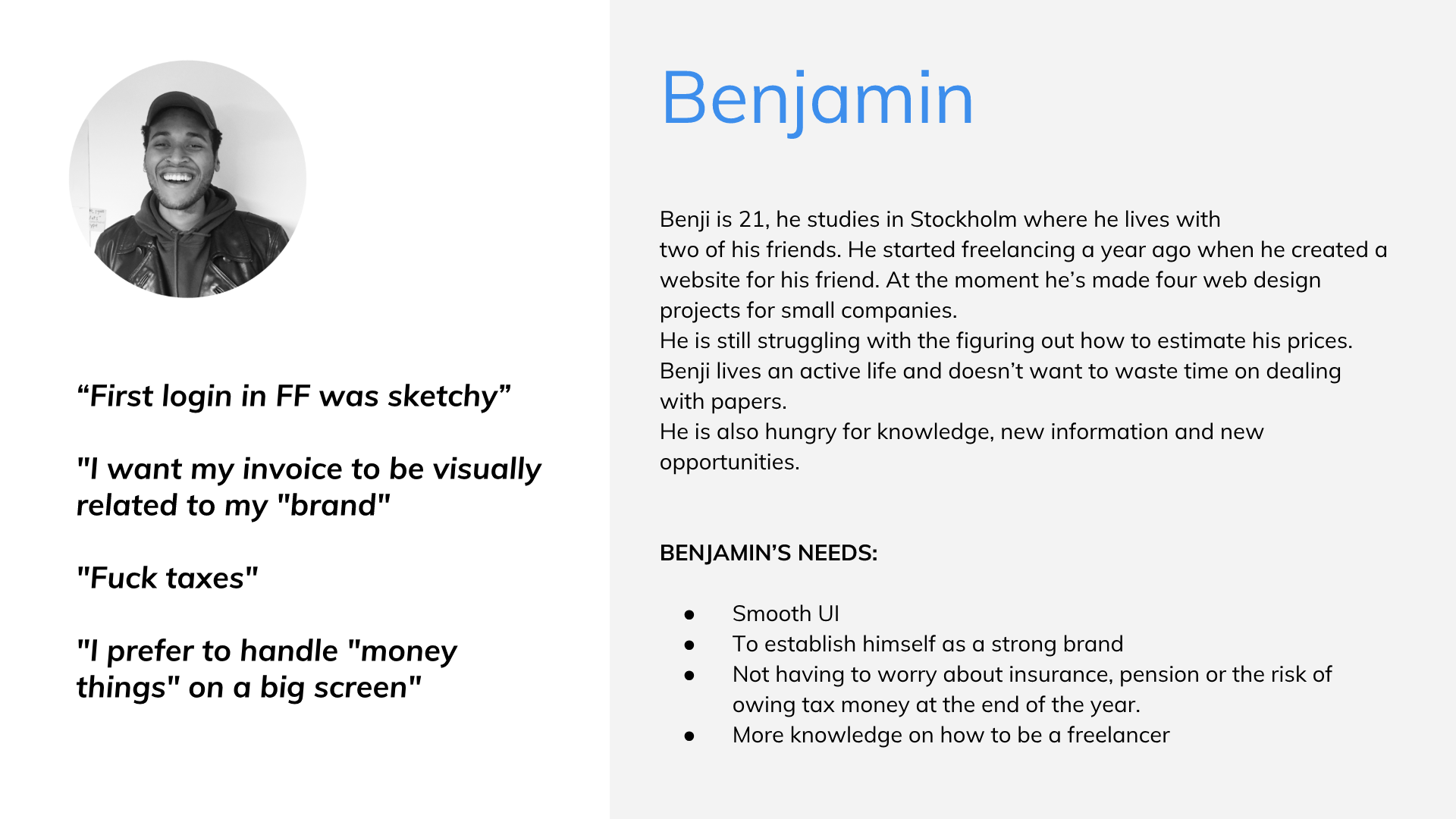
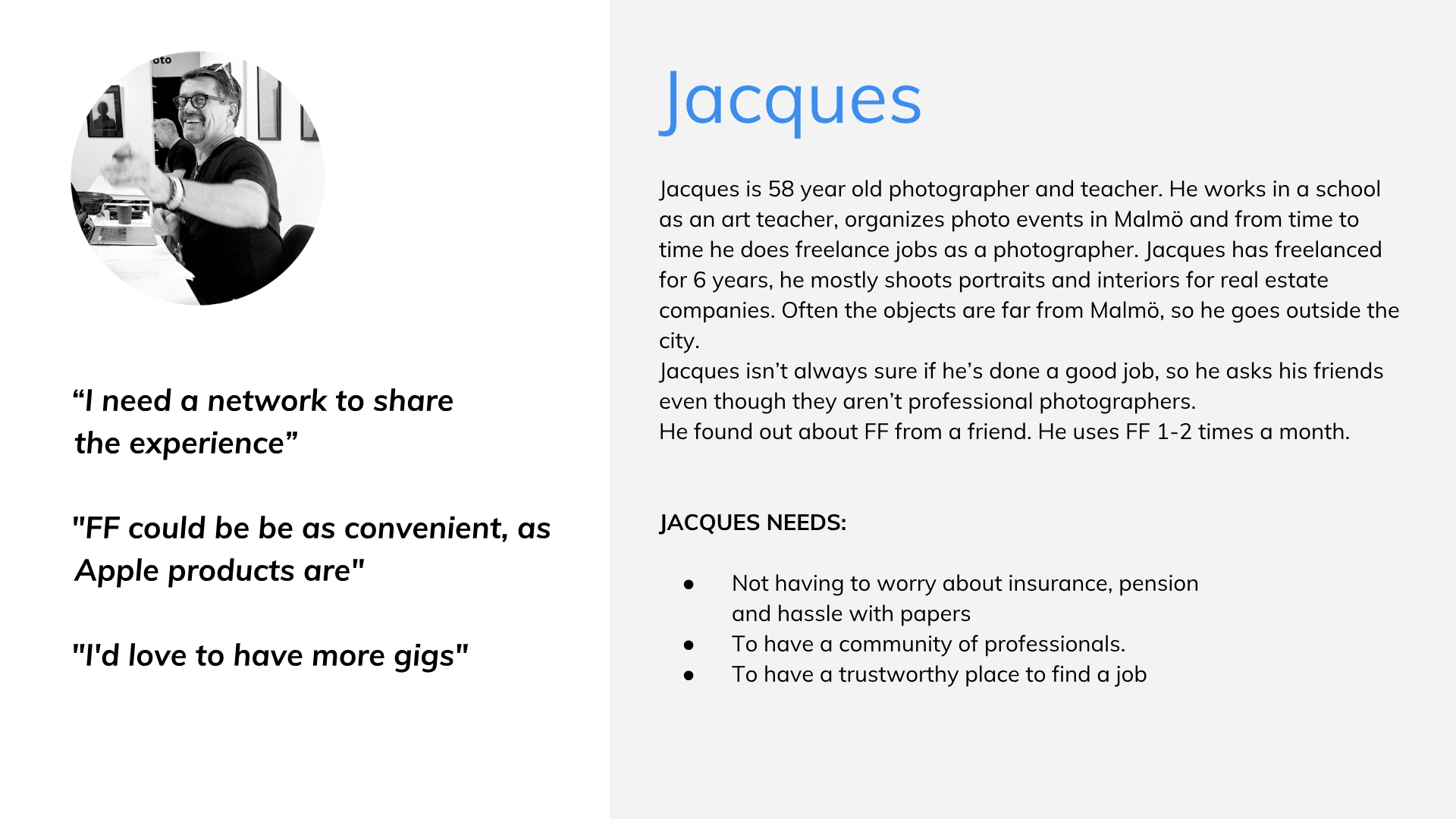
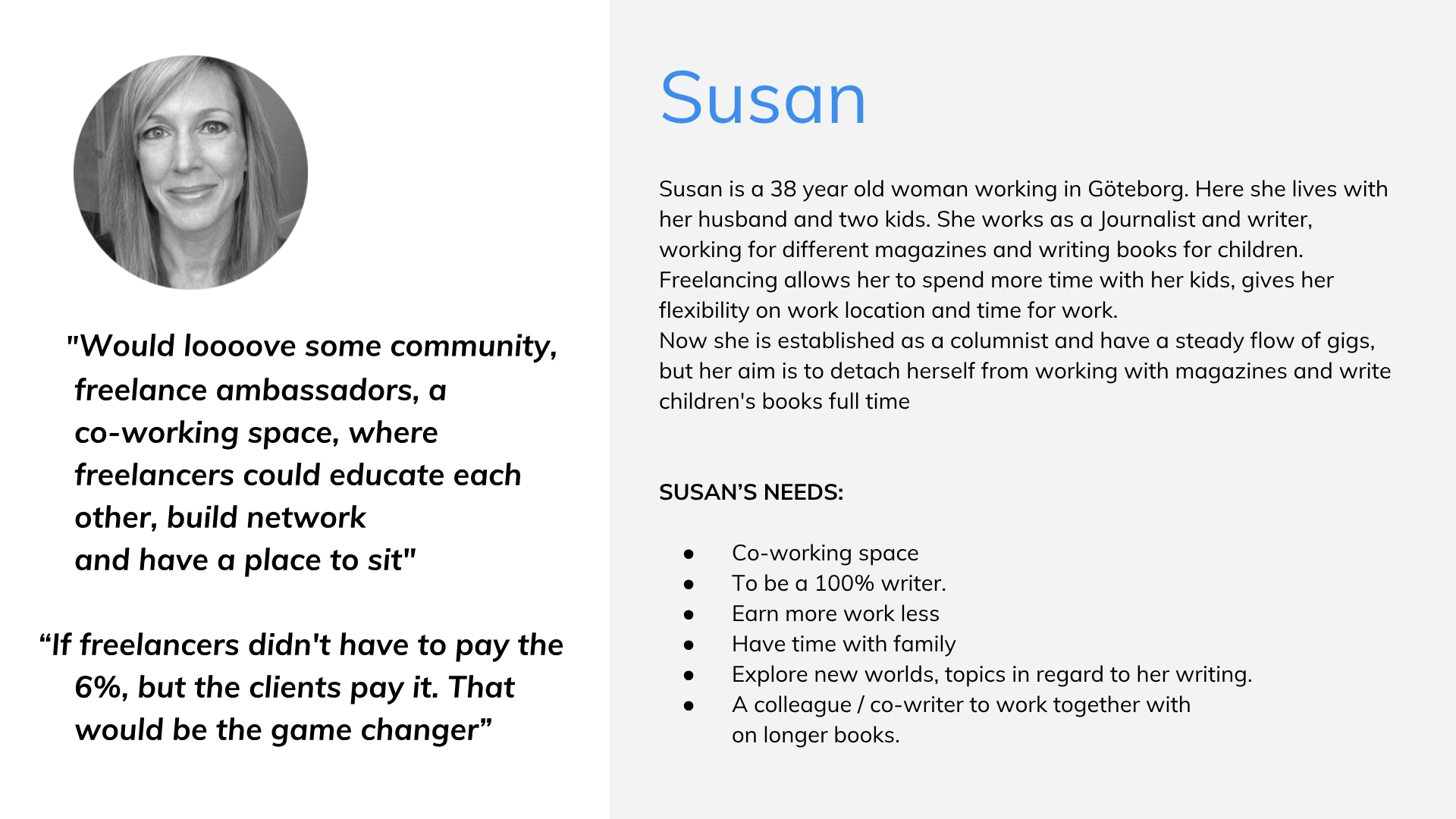
Solutions
In consideration of user needs, competition research and future trends we came up with two conclusion indicated that there were two overarching needs, the need for a new digital service platform with improved UX and a physical/digital Community platform.
USER NEEDS — DIGITAL SERVICE SOLUTION
1. Digital service solution
We wanted to reduce user barriers, so we redesigned the whole UX architecture to follow the ideal information since we know that the user requires a much smoother onboarding process. We also put a lot of focus on the personal landing page and designed a new structure that supports the user in every step of running a project opposed to today's invoice focused solution.
Using good design and UX, we wanted to shift the perceptions of FF from being a financial service to becoming a supportive service, who assists the user in the pursuit of business independence. The landing page – new features include a new project timeline, a financial overview and a new menu structure.
NEW UX/UI FOR FRILANS FINANS WEBSITE
2. Community platform solution
We proposed an off / online community that provides and covers the user needs. The solutions includes physical co-working spaces where you can go and work, network, participate in workshops and just hang out. At the same time, it provides the user with an online platform with a bustling community, skill-sharing sessions and a platform to become a mentor for others. The end result is a place to find the latest networking events, workshops and lectures by industry leaders.
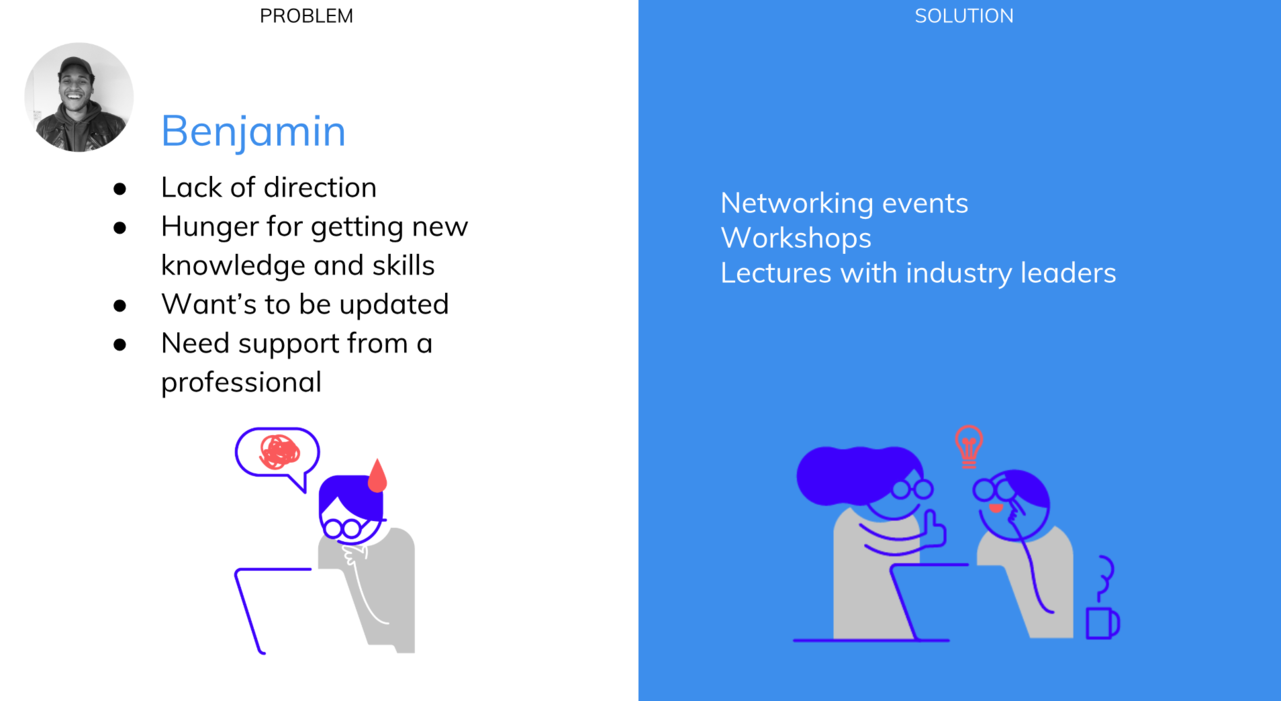
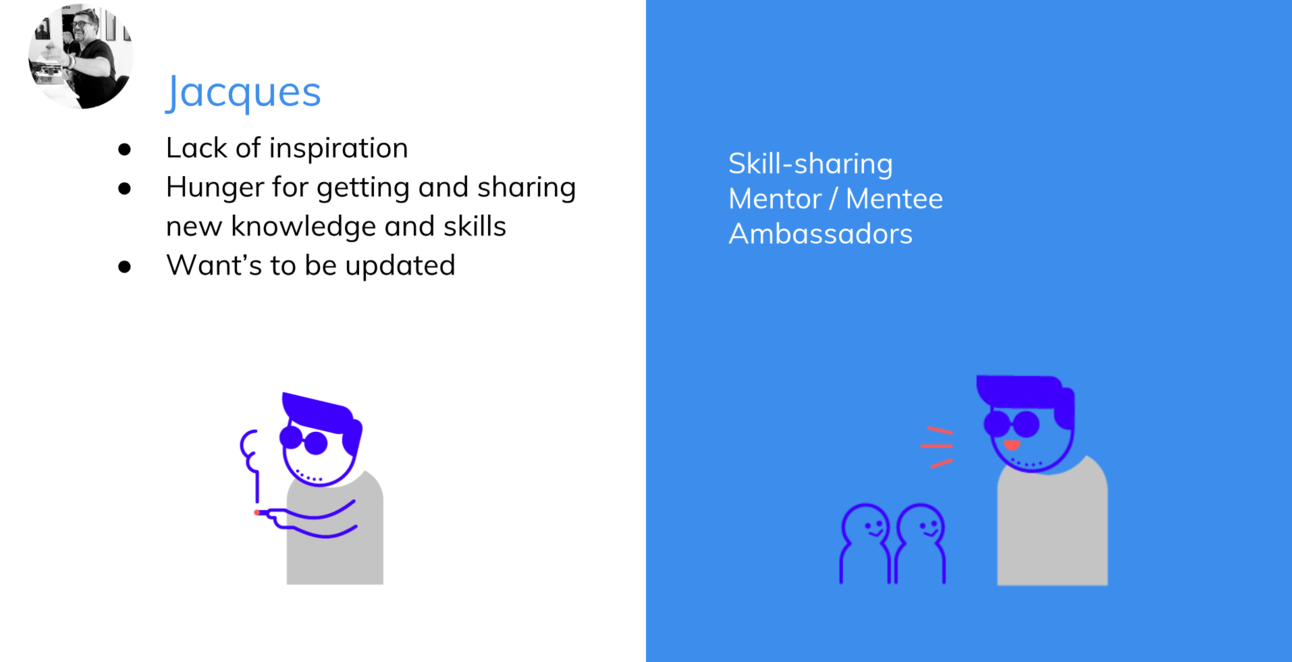
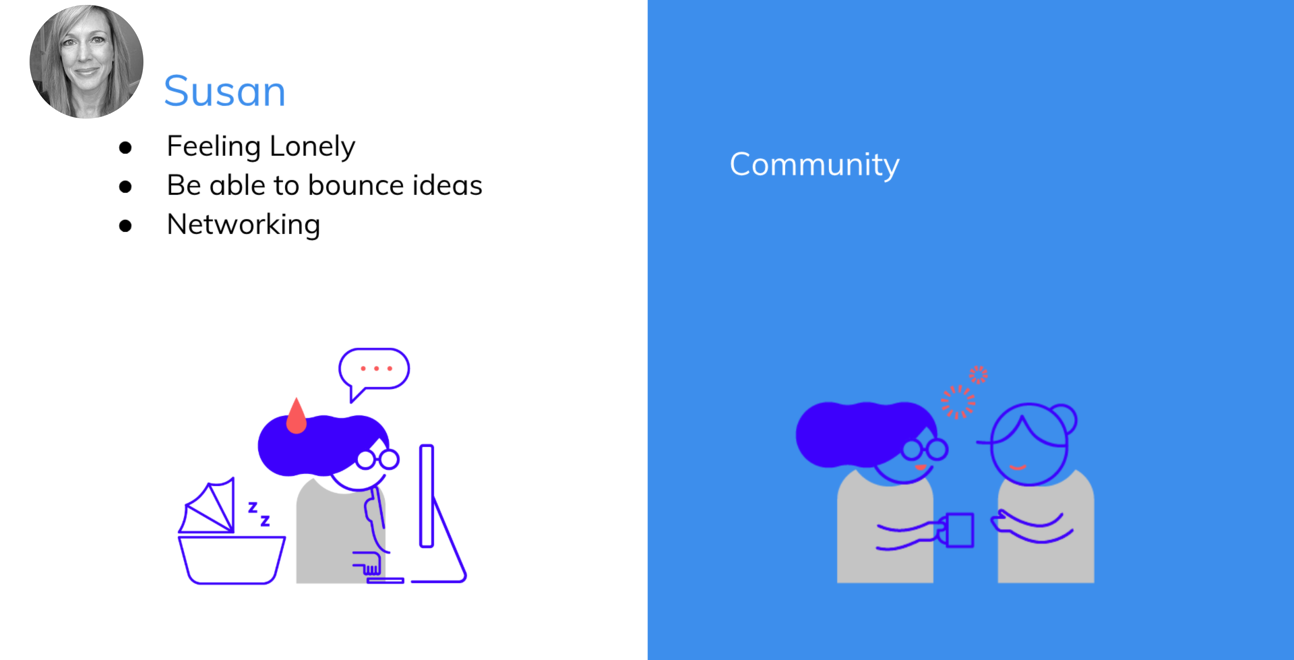
USER NEEDS — COMMUNITY PLATFORM SOLUTION
This solution will not only improve to the relationship between FF and its users, the freelancers. It will also strengthen the relationship between the freelancers themselves and enable them to empower, support and develop one another.
THREE WAY CONNECTION
My learnings
Be future ready, fail hard,
fail fast,
fail gloriously!
And so I did, I failed and learned so much during this project. It helped me and the team to challenge and rethink the brief and in that way find new possibilities and solutions.
Looking back makes me questioning some of our priorities when it comes to our client and their internal struggles, perhaps we should have looked more into our clients "blue print" and digged deeper regarding their structure as an organisation and put more time on their brand strategy.
Tools
Design thinking
Quantitative & qualitative research
Clustering insights
Collaborative ideation
Prototyping
User centered design thinking
Speculative design
Quantitative & qualitative research
Clustering insights
Collaborative ideation
Prototyping
User centered design thinking
Speculative design
The team
Andreas Ahlqvist, Tanya Borodina, Jonas Enqvist, Lærke Kinly Jensen, Jihoon Lee, Andrew Norgaard.